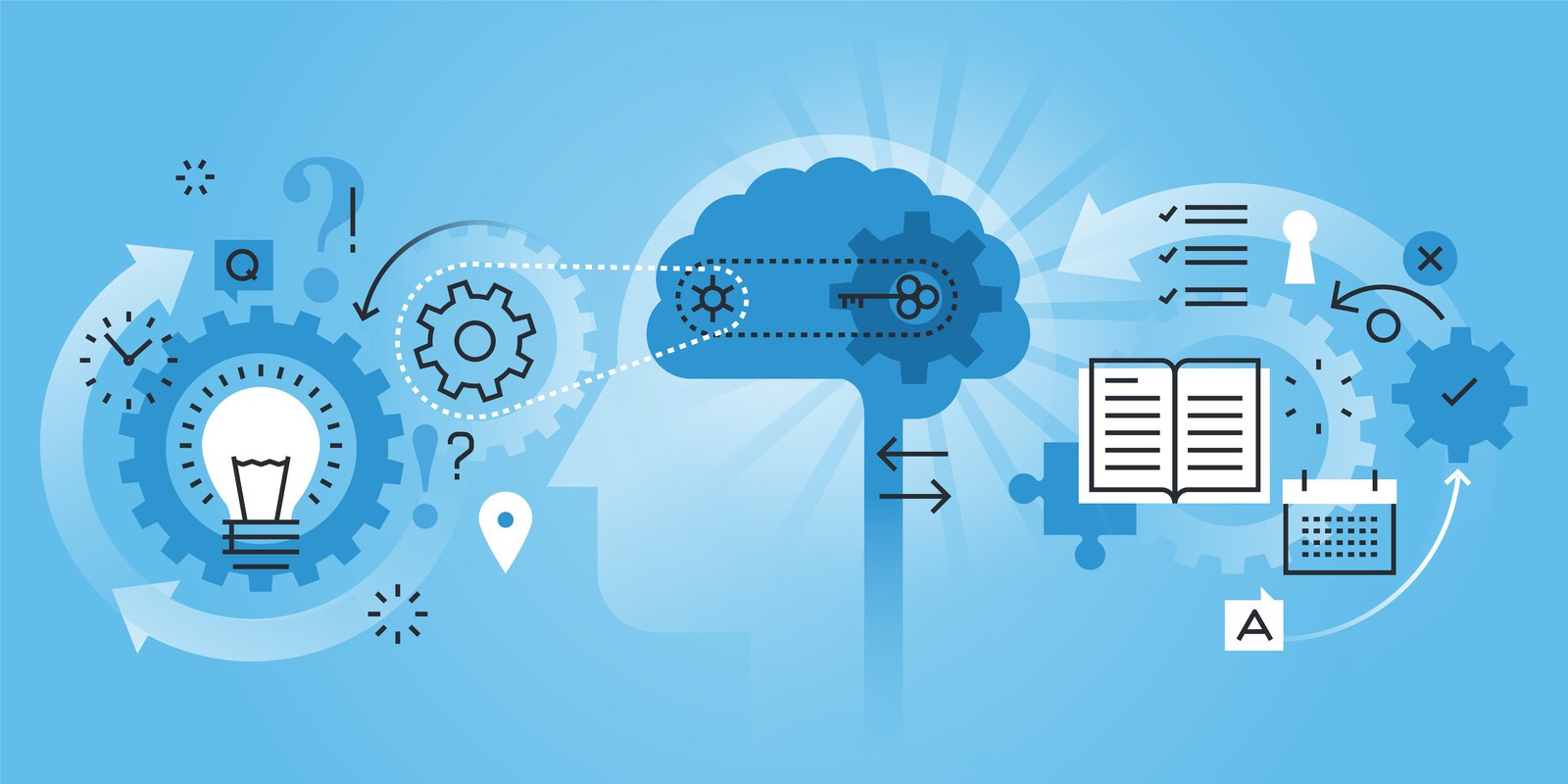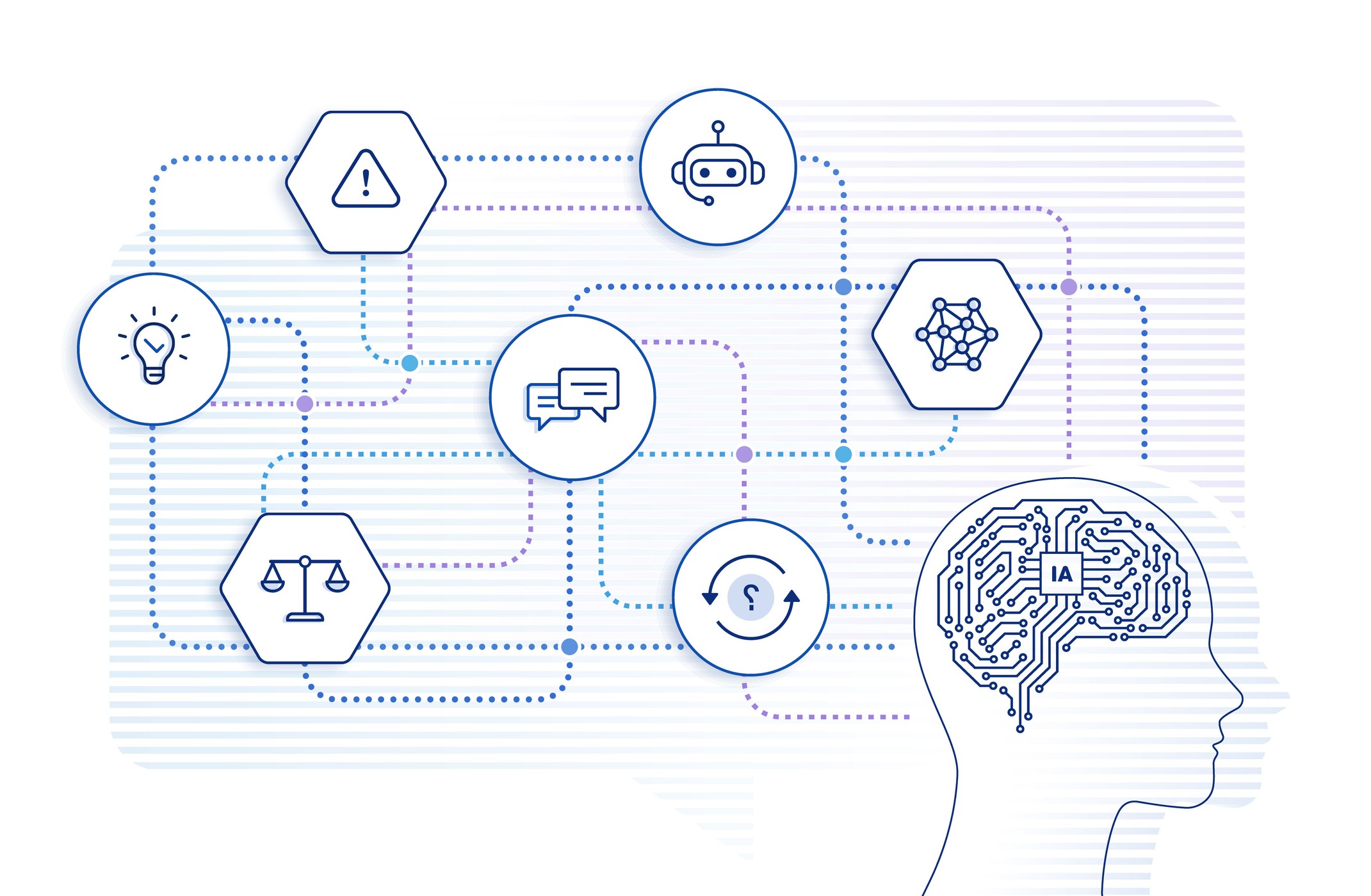The terms "Machine Learning" (ML) and "Artificial Intelligence" (AI) have become more than just buzzwords; they represent the frontier of what's possible in technology. At their core, Machine Learning refers to the system where computers learn from data, adapting and improving without explicit programming, while Artificial Intelligence encompasses the broader concept of machines being able to perform tasks in ways we consider "intelligent." Together, they're reshaping industries, and web solutions are no exception.
Web design, SaaS (Software as a Service), and web applications are undergoing transformative changes thanks to the capabilities introduced by ML and AI. The duo is not only optimizing processes but also redefining user experiences, offering personalization like never before, and unlocking efficiencies that were once thought impossible.
What is Machine Learning?
Machine Learning, often abbreviated as ML, is a subset of artificial intelligence that focuses on building systems that can learn from data. Rather than being explicitly programmed to perform a task, a machine learning system uses algorithms and statistical models to analyze and draw inferences from patterns in data.
Over time, and with more data exposure, these systems refine their outputs, progressively improving their performance.
In the context of web development, ML introduces a realm of possibilities that go beyond static, one-size-fits-all solutions:
- Personalized User Experiences
Machine Learning can be used to analyze user behaviour and preferences over time, allowing web platforms to dynamically tailor content and interface elements to individual users. Whether it's through product recommendations, personalized content feeds, or adaptive UI/UX designs, ML ensures that users find what they need more efficiently and enjoy a more engaging browsing experience. - Data-driven Insights and Decision-making
For businesses, websites aren't just about providing information; they're valuable tools for gathering insights. ML can process vast amounts of user interaction data to derive actionable insights. Whether it's understanding which product features are most popular or identifying user drop-off points in a sales funnel, ML-driven analytics offer a depth of understanding that can guide strategic decisions. - Enhancing Web App Functionalities
Machine Learning can be integrated into web applications to introduce advanced features like chatbots, predictive text input, and image recognition. For instance, an e-commerce site can use ML to automatically tag and categorize product images or to forecast sales trends based on historical data.
Machine Learning is much more than a techy term; it's a transformative force in web development. It heralds a shift from generic, static websites to dynamic platforms that actively adapt and evolve based on user interactions and data inputs.
What is Artificial Intelligence?
Artificial Intelligence, commonly referred to as AI, can be thought of as the broader science of machines being able to carry out tasks in a way we would consider “smart”. It encompasses a vast range of subfields, from robotics to voice recognition, and of course, the aforementioned Machine Learning.
AI strives to create machines that can mimic or replicate human intelligence processes, whether that's thinking, learning, problem-solving, or even perception.
- Chatbots and Virtual Assistants
One of the most visible applications of AI in web solutions is the emergence of chatbots and virtual assistants. These AI-driven entities interact with users in real-time, answering queries, providing support, or even assisting in product selection. They can operate around the clock, handle multiple queries simultaneously, and deliver consistent, instant responses. The beauty of AI here is that over time, these chatbots learn from user interactions, becoming more efficient and more attuned to users' needs. - Predictive Analytics for User Behaviours
AI can process enormous datasets, drawing patterns and making predictions. For website owners, this capability translates into understanding how users will likely behave. By analyzing past behaviours, AI can predict future actions, allowing businesses to tailor content, offers, and marketing strategies to match predicted behaviours. For instance, AI can help predict which products a user is likely to purchase next or which article they'll want to read. - Automating Repetitive Tasks
AI's ability to recognize patterns and make decisions based on data makes it perfect for automating tasks. For websites, this might mean auto-generating reports, sorting through user feedback to categorize comments, or even automating backend processes to optimize site performance. AI takes on the mundane, repetitive tasks, ensuring they're done accurately and efficiently, leaving humans to focus on more strategic, creative endeavors.
Artificial Intelligence isn't just a futuristic concept; it's an integral part of many web platforms today. Its applications are varied but centered around one core principle: enhancing user experiences and business functionalities by mimicking human intelligence, but at a scale and speed that humans could never achieve.
Distinguishing Between Machine Learning and Artificial Intelligence
While the terms Machine Learning and Artificial Intelligence are often used interchangeably, they are not synonymous. Their differences are fundamental to understanding their individual roles and capabilities. Let's break them down:
Learning Methodologies: Supervised vs. Unsupervised
- Machine Learning (ML)
ML typically operates under supervised learning. This means it works with labeled data. For instance, if you feed an ML model thousands of images of cats and tell it, "This is a cat," the model will learn over time to identify other cat images. There’s also unsupervised learning, where the model finds patterns and relationships in the data without any prior labels. - Artificial Intelligence (AI)
AI encompasses both supervised and unsupervised learning but goes beyond. It dives into a myriad of methods to achieve or simulate human intelligence, whether that’s through decision trees, neural networks, or reinforcement learning.
Application Specificity: Broad vs. Narrow Implementations
- Machine Learning
ML focuses on a specific task. Once trained, an ML model developed to recognize cats in images will do just that. It won’t suddenly start identifying dogs unless re-trained or provided with that specific data. - Artificial Intelligence
AI has a broader spectrum. While there are AI models built for specific tasks (Narrow AI, like Siri or Alexa), the ultimate goal for many AI researchers is General AI, machines that can perform any intellectual task a human can.
Evolution Over Time: Static vs. Adaptive
- Machine Learning
ML models evolve as they are exposed to more data. The more data they process, the better their predictions or classifications become. They adapt and improve. - Artificial Intelligence
While many AI models can adapt and learn, not all AI is designed to evolve over time. Some AI, particularly rule-based expert systems, remain static and don’t change unless they're updated by humans.
While all Machine Learning can be considered a form of AI, not all AI is Machine Learning. The distinction lies in their methods, scope, and adaptability.
Advancing Web Solutions with Machine Learning and AI Integration
Harnessing the capabilities of Machine Learning and Artificial Intelligence has become paramount for modern web solutions. Integrating these technologies can supercharge a website or app, offering richer experiences and smarter functionalities. Here’s how:
Enhancing User Engagement with Predictive Analytics
Harnessing the power of predictive analytics allows websites and apps to craft a keen understanding of user behaviour. By tapping into prior actions and preferences, these platforms can accurately anticipate subsequent user moves. Such anticipations can take various forms - from suggesting a product that aligns with a user's browsing history, curating relevant content to retain their interest, or even refining the navigation to make it feel more intuitive.
This predictive approach doesn't merely stop at enhancing the user experience. It plays a pivotal role in driving retention. By showcasing content or suggestions that a user is likely to be interested in next, it's possible to captivate their attention for extended durations, thereby diminishing bounce rates and cultivating a sense of loyalty.
Improving Efficiency and Automation with AI
Artificial Intelligence is ushering in a new era of efficiency and automation. At the core of its capabilities is the ability to streamline operations.
Beyond operational efficiency, AI's role extends to enhancing the performance of websites and apps. By relentlessly analyzing various performance metrics, it identifies areas of improvement, suggesting modifications that bolster speed, accessibility, and overall user experience. Another feather in AI's cap is scalability.
With the inevitable growth in user base, AI seamlessly scales to manage the surge, ensuring that the platform's performance remains consistent, devoid of manual interventions.
Crafting Personalized User Experiences with ML Algorithms
Machine Learning is at the forefront of curating personalized user experiences that resonate. By diving deep into a user's past behaviours and preferences, ML algorithms take on the role of a discerning curator. In an e-commerce setting, this translates to pinpoint product recommendations.
For content platforms, it's about presenting articles that echo the reader's interests. But the wonders of ML don't end at content curation. It embarks on a journey to analyze the myriad ways users navigate a platform, drawing insights to refine the interface. By tailoring the interface to resonate with individual user preferences, it ensures the navigation process is not just smooth but instinctive.
The true prowess of Machine Learning, however, lies in its feedback loop. As it perpetually assimilates information from user interactions, it fine-tunes its algorithms. This iterative learning ensures that the more a user interacts, the more precise the personalization becomes.
Incorporating Machine Learning and Artificial Intelligence into web solutions isn't just a trend; it's becoming an industry standard. By understanding and leveraging these technologies, businesses can offer unparalleled experiences, fostering engagement, trust, and loyalty among users.
Machine Learning and AI in Websites, SaaS, and Web Apps
The adoption of Machine Learning and Artificial Intelligence isn’t just about riding the wave of technological advancements. Their integration brings tangible improvements to the performance and user experience of websites, SaaS products, and web apps.
- Staying Relevant
In an ever-evolving digital landscape, employing ML and AI ensures that your web solution is adapting to the latest user behaviours and preferences. This keeps your brand relevant and top-of-mind for users. - Operational Efficiency
Especially for SaaS products, AI can streamline numerous operational tasks, reducing overhead costs, and ensuring smoother user experiences. - Dynamic Content Delivery
Whether it's a blog, news site, or an e-commerce platform, delivering dynamic content that resonates with the user's current interests and needs can significantly boost engagement rates. This is where ML shines, constantly evolving its content curation strategies based on fresh user data. - Improved Decision Making
Both ML and AI can provide detailed insights and analytics, which can be the foundation for business strategies. This ensures decisions are data-driven, reducing risks and increasing the potential for positive outcomes.
The edge provided by ML and AI integration can be the difference between a fleeting visit and a loyal customer. Embracing these technologies is no longer a luxury but a necessity for those looking to thrive online.
Challenges in ML and AI Integration for Web Development
Despite the evident advantages of Machine Learning and Artificial Intelligence, integrating them into web development isn't always straightforward.
Technical Prerequisites
Navigating the technical landscape of Machine Learning and Artificial Intelligence is not for the faint-hearted. Both technologies usually demand a powerful computational backdrop to function effectively. The onus is on developers to ensure that the hosting environment is up to the task and won't lead to performance bottlenecks.
In addition, AI and ML technologies are heavily data-dependent. Their efficacy is directly proportional to the quality and volume of data they are trained on. This makes the task of data filtering and preprocessing particularly challenging.
Beyond infrastructure and data quality, there's the question of expertise. The integration and optimization of ML and AI functionalities require specialized skills, and not every developer comes equipped with the requisite knowledge. The learning curve is steep, often necessitating a specialized skill set.
If you're considering integrating ML and AI into your web solutions but are unsure about the technical prerequisites, e-dimensionz is here to guide you. With our extensive expertise in the field, we can make your transition smooth and effective. Schedule a consultation with e-dimensionz for expert ML/AI Implementation.
Ethical and Unbiased Algorithms
As AI and ML algorithms increasingly dictate myriad facets of our digital lives, questions of bias and ethics emerge with renewed urgency. At the core is the bias that lurks in data.
An AI or ML model is only as good as the data it's trained on. Should this data be tinted with inherent biases, the results invariably mirror these skewed perspectives. This underscores the importance of diverse and representative data sets, ensuring that the algorithm's outputs resonate with fairness. But ensuring bias-free outputs isn't the endgame.
In a time when AI-driven decisions permeate sectors ranging from finance to healthcare, the onus is on businesses to ensure that these decisions are not shrouded in mystery. Transparency and accountability rise to prominence.
Every AI-led decision, especially those with tangible real-world ramifications, needs to be explainable. Alongside transparency, there's a burgeoning dialogue surrounding the ethical dimensions of AI. Be it concerns about user data privacy or the broader implications of AI strategies, the business world must tread with caution, ever-aware of the moral contours of their AI-centric endeavors.
The Inevitable Merge of ML, AI, and Web Solutions
The amalgamation of Machine Learning and Artificial Intelligence in web solutions seems not just plausible but inevitable. The transformative potential of these technologies is undeniable.
Future-Ready Web Solutions: With the rapid advancements in both ML and AI, web solutions will become more intuitive, responsive, and user-centric. This isn't just a trend but the next step in the evolution of the digital experience.
While challenges exist, the rewards - in terms of user engagement, operational efficiency, and business growth - are immense. By leveraging ML and AI, businesses can not only stay competitive but set themselves apart in a crowded digital marketplace.




